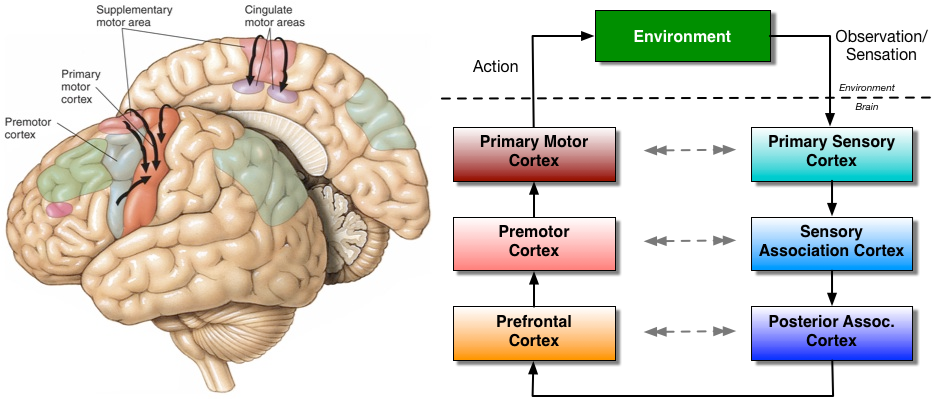
In both brain and machines, a synergistic strategy turns out to be one that is widely used. A modular approach to action selection has a number of advantages. It simplifies the dimensionality of the action spaces over which we need to reason. It enables quick planning and execution of movements. It provides a simple mechanism that connects our plans and intentions to commands. It supports the rapid learning and generalization that humans are capable of.
Our muscles are combined in seemingly endless ways. How is the brain able to learn, plan and rapidly execute complex movements? Or alternatively, how does the brain choose from the immense set of solutions for a motor task? We develop and learn about actions and movements throughout our lives. Early human development from neonatal stages to that of a toddler is a time in which coordinated activations of groups of muscles are constantly explored.
Applying these tools in tasks related to reaching, grasping, maintaining posture, pain-based reactions, we are able to glean an implementation level understanding of synergistic action selection. Some of our experimental evidence includes direct evidence for synergistic movement in the monkey motor cortex. The brains of patients that are damaged following a stroke have been shown to have fewer synergies than those of a healthy human brain.
Auto202